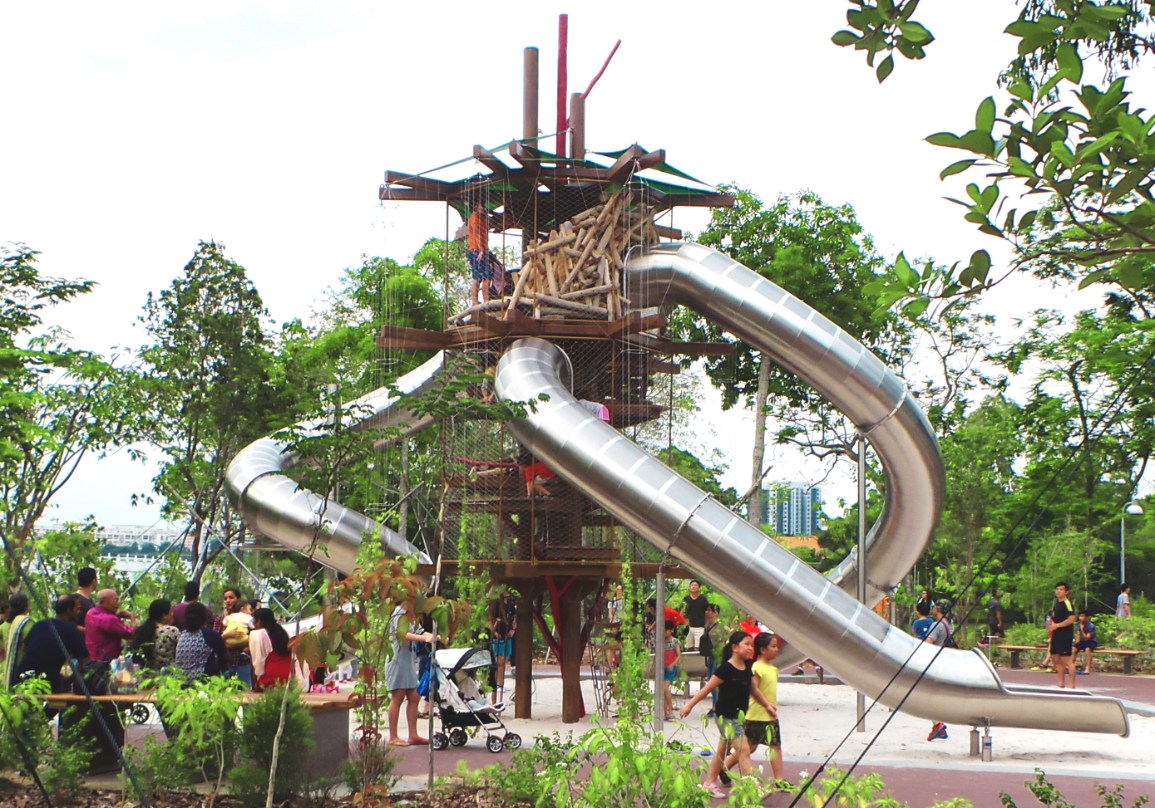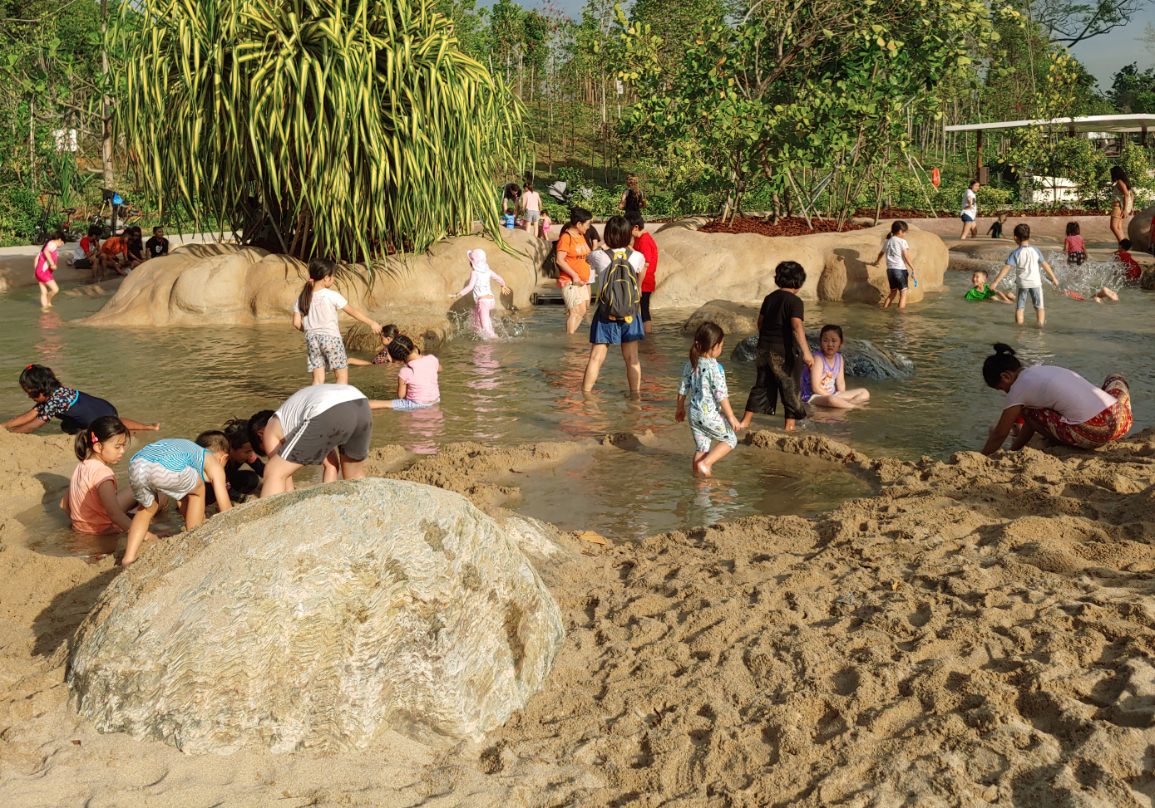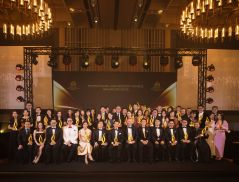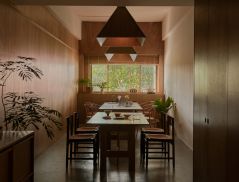
During Singapore’s partial-lockdown earlier this year brought about by COVID-19, public parks and gardens were widely visited. Many sought out the green lungs for fresh air, exercise and as a place to escape to after being confined indoors all day.
One such destination is Jurong Lake Gardens. Singapore’s third national garden after the Botanic Gardens and Gardens by the Bay, it also stands out for being the first one located in the heartlands.
Of the 90 Ha that make up Jurong Lake Gardens, slightly more than half has been opened to the public, named Lakeside Garden. Leading the landscape architecture, water engineering and playground design was Ramboll Studio Dreiseitl.
As part of the project, it ensured more than 3,000 existing trees within the site were preserved, including the bigger ones like banyan and yellow flame, with another 200 that were transplanted.
It also carefully curated flora to attract birds, butterflies and dragonflies so that a vibrant habitat with a rich biodiversity would be established.
Three Primary Ecotones
“The development is envisioned to be a ‘people’s garden’, accessible to all segments of the community, and is a conscious effort to bring back the nature that was once unique to the area,” says Faiz Bin Zohri, Senior Landscape Architect at Ramboll Studio Dreiseitl.
“We wanted to restore the landscape heritage of the freshwater swamp forest as a canvas for recreation and community activities.”
Prior to the neighbourhood’s (Jurong Lake District) conversion into an industrial estate in 1961 and later, a commercial and regional centre, the area was a freshwater swamp dominated by a mangrove forest and teeming with flora and fauna.
Lakeside Garden therefore strives to recreate that through a slew of techniques. For starters, it split the primary ecotones into three different types: wetlands, woodlands and grasslands.
These are then further divided into various unique and specific habitats such as Alstonia Island, Freshwater Swamp, Riverine areas, Biodiversity Woodlands, and Dry and Wet Grasslands.
The man-made Alstonia Island, for instance, is composed of the excess soil accumulated during Lakeside Garden’s construction.
It mimics the almost-permanently waterlogged conditions of a freshwater swamp – in nod to the natural history of the area – and floods when Jurong Lake’s water levels rise.
A series of braided waterways forms the 900m-long Neram Streams that wind around banyan tree clusters. The feature was carved out of a previously straight concrete drain that led from a road to the lake.
Certain points of the streams come up to 6m deep, resulting in the need for their banks to be precisely bioengineered through techniques like gabion walls, rip-raps, reed rolls and loose rock fills to guarantee slope stability.
“A hidden vision of the overall design was for all urban water collected at the site to go through swales or streams before hitting the lake,” says Faiz.
“Three concrete drains running through the original site were transformed into completely naturalised streams. The biggest of these three is the Neram Streams.
“The series of swales and streams integrated as part of the park cleanses and increases the catchment of the area before entering the lake.”
Grassland is a picturesque section that forms part of the intertidal habitat, transiting from the dry grassland of the inland area, towards the wet grasslands at the lake shore.
Today, it has become a refuge for the migratory and resident avian population, as well as a food source and nesting ground.
Bird hides are set on a series of mounds located at the periphery of the 3.5 Ha site, prime for spotting grassland birds at dusk jumping between clusters, or flying in a flock against the sky.


A Community Space
Proving itself to be a park for the people, Lakeside Garden has no shortage of public access areas.
Rasau Walk is a 300m, barrier-free boardwalk that meanders within the transitional tidal edge.
Visitors can inspect plants such as the sealing wax palm and nibong palm that are adaptable to the wet and dry conditions. In between, viewing points frame the tranquil grasslands and serene lakeside scenery.
Endless entertainment has been provided for the children too, making Lakeside Garden the largest nature play garden in the heartlands.
For instance, Forest Ramble is a biophilic play space where they can imitate the actions and motions of animals that inhabit the freshwater swamps.
“They can hop about like a frog on the trampolines at the Frog Play zone, cruise in the air on a zipline and pretend to be a Heron flying from one nest to another or glide down the slithering slide at the Snake Tower play zone.”
Another play experience is Clusia Cove, where water movements that mimic the tidal pattern, surface ripples and directional currents similar to coastal shores can be witnessed.
“Children can put on their cutest swimwear, build sandcastles, and feel the currents tickle their shins, much like a day out at the beach,” points out Faiz.
“A 3-Ha closed-loop water recycling system that treats water naturally is used for the water playground.”
The cleansing biotope, which serves as a natural water treatment system and UV treatment, is used to disinfect the water before being pumped into this play area.
It is made up of a series of cells filled with sand filter media, as well as semi-aquatic plants that absorb excess nutrients from the water.


With all these attractions, it is no wonder that Lakeside Garden was a popular destination during Singapore’s partial lockdown from April to June this year.
Yet, the true indicator of its success must surely be that rare animal species like hornbills, buffy fish owls and otters are regularly spotted there, attesting to the fact that this is truly a garden for the community.


 Share
Share













